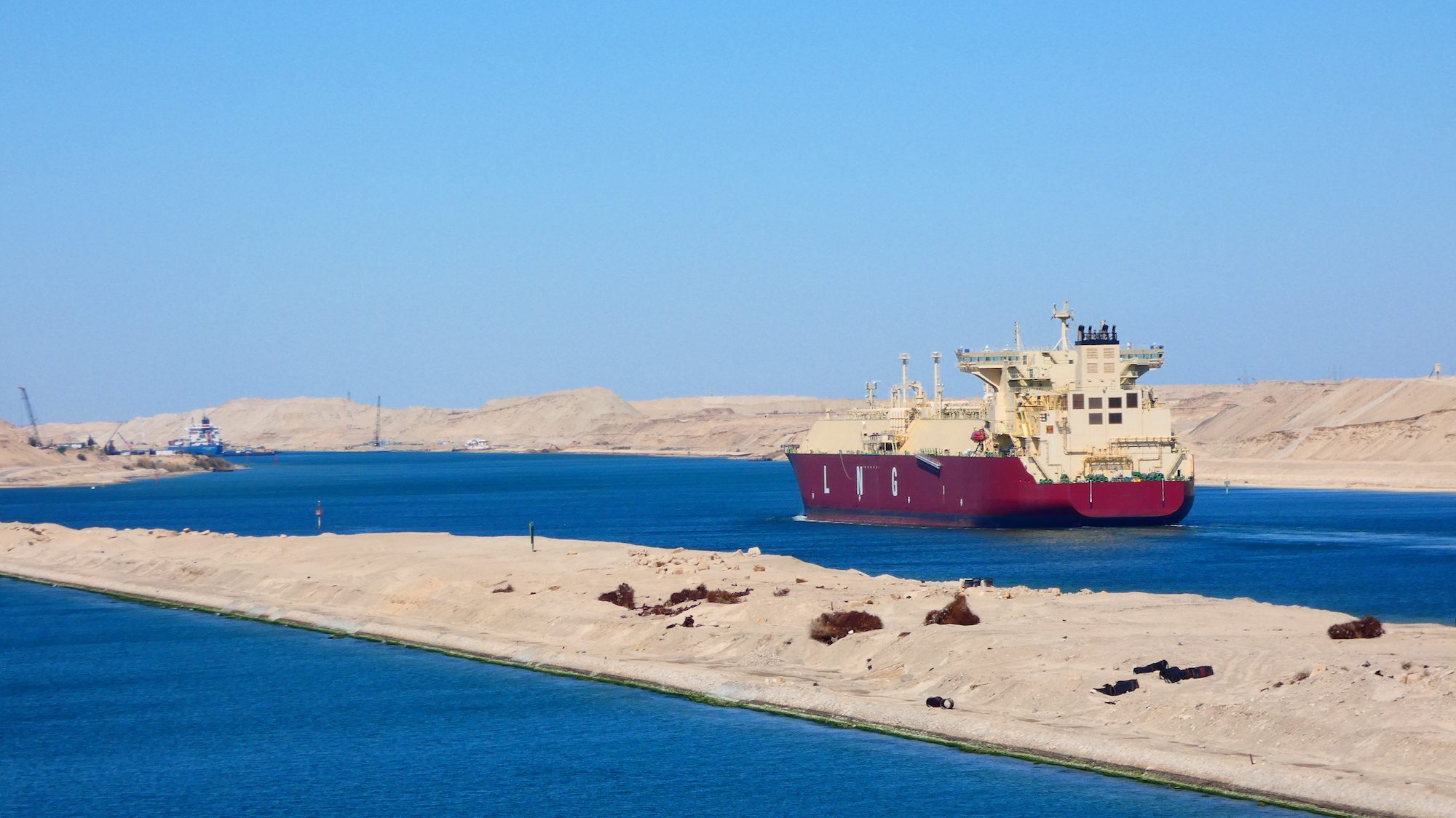U.S. Customs Revenue Tops $100 Billion for First Time Amid Tariff Surge
US revenue from customs duties this fiscal year surpassed $100 billion for the first time, reflecting higher tariffs imposed by the Trump administration.

By Anna Shiryaevskaya (Bloomberg) —
It’s getting cheaper — at least for now — to rent a liquefied natural gas tanker, despite turmoil in the Red Sea that is forcing some vessels to take longer and more costly routes.
The slump in LNG shipping rates started in late November but accelerated this week, with prices in the Pacific basin tumbling below $100,000 a day for the first time since August, data from Spark Commodities show. Atlantic basin rates are also tanking, shedding 16% since Friday.
The drop is partially due to lower demand for LNG — and vessels to haul it — amid mild weather. There are also no major price gaps between consuming regions, meaning that markets remain segmented, according to Spark Chief Executive Officer Tim Mendelssohn.
Cheaper freight is a relief for shippers embarking on lengthy voyages around Africa after Houthi militants escalated their attacks on vessels in the Red Sea, a vital waterway for East-West trade. Sailing via the Cape of Good Hope can add two weeks to journeys, tying up vessels and potentially leading to a tighter shipping market.
“The current lack of demand and limited arbitrage opportunities have contributed to an increase in vessel availability, exerting downward pressure on spot rates,” shipbroker Fearnleys A/S said in a weekly note Wednesday. “LNG prices have also decreased, primarily attributed to ample inventories despite declining temperatures in the North Asia region.”
At the moment in the LNG trade, fuel from the US typically lands in Europe, while Asian buyers mainly source it from closer producers, such as Qatar or Australia. That means many vessels haven’t had to sail through the Suez Canal or the drought-stricken and congested Panama Canal.
To be sure, the redirection of cargoes — still in its early days — and increased risks of further attacks may result in a temporary surge in ton-miles, which could create additional demand for shipping, according to Fearnleys.
Similarly, if Asian LNG demand spikes, leading to higher prices there, “this could drive US cargoes to Asia instead, in which case the situation at the Suez Canal could become much more impactful to freight and cargo prices,” said Spark’s Mendelssohn.
“The last few years have shown that there is a risk of supply-side shocks to freight and cargo prices,” he added. “The lack of freight rate increases today is not necessarily a sure sign of price stability in the coming weeks.”
© 2023 Bloomberg L.P.

Sign up for gCaptain’s newsletter and never miss an update

Subscribe to gCaptain Daily and stay informed with the latest global maritime and offshore news


Stay informed with the latest maritime and offshore news, delivered daily straight to your inbox
Essential news coupled with the finest maritime content sourced from across the globe.
Sign Up